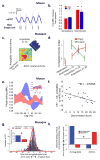Amygdala-prefrontal interactions in (mal)adaptive learning
- PMID: 25583269
- PMCID: PMC4352381
- DOI: 10.1016/j.tins.2014.12.007
Amygdala-prefrontal interactions in (mal)adaptive learning
Abstract
The study of neurobiological mechanisms underlying anxiety disorders has been shaped by learning models that frame anxiety as maladaptive learning. Pavlovian conditioning and extinction are particularly influential in defining learning stages that can account for symptoms of anxiety disorders. Recently, dynamic and task related communication between the basolateral complex of the amygdala (BLA) and the medial prefrontal cortex (mPFC) has emerged as a crucial aspect of successful evaluation of threat and safety. Ongoing patterns of neural signaling within the mPFC-BLA circuit during encoding, expression and extinction of adaptive learning are reviewed. The mechanisms whereby deficient mPFC-BLA interactions can lead to generalized fear and anxiety are discussed in learned and innate anxiety. Findings with cross-species validity are emphasized.
Keywords: amygdala; generalization; oscillations; pavlovian learning; prefrontal cortex; safety.
Copyright © 2014 Elsevier Ltd. All rights reserved.
Figures


References
-
- Poulos AM, Fanselow MS. The neuroscience of mammalian associative learning. Annu Rev Psychol. 2005;56:207–234. - PubMed
-
- Medina L, Bupesh M, Abellán A. Contribution of genorarchitecture to understanding forebrain evolution and development, with a particular emphasis on the amygdala. Brain Behav Evol. 2011;78:216–236. - PubMed
-
- McDonald AJ. Cortical pathways to the mammalian amygdala. Prog Neurobiol. 1998;55:257–332. - PubMed
Publication types
MeSH terms
Grants and funding
LinkOut - more resources
Full Text Sources
Other Literature Sources
Research Materials

